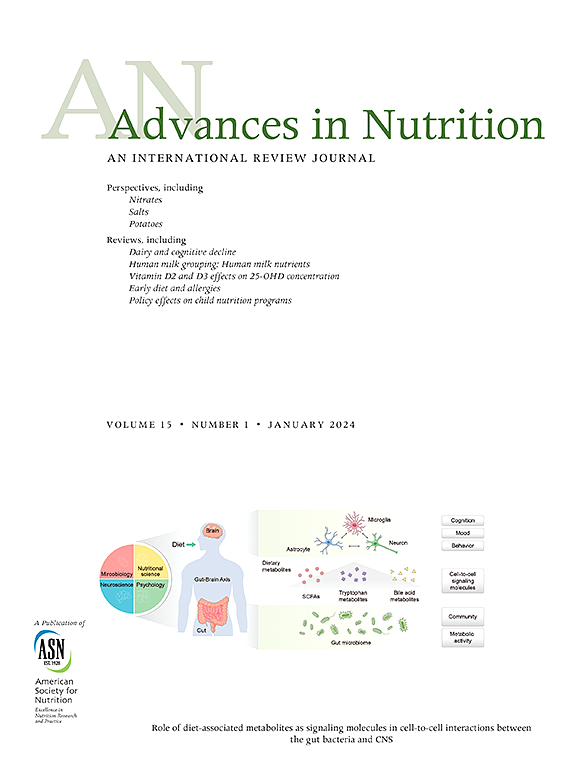Perspective: Growth Monitoring and Promotion as an Opportunity to Improve Early Childhood Development
IF 9.2
1区 医学
Q1 NUTRITION & DIETETICS
引用次数: 0
Abstract
Growth monitoring and promotion (GMP) visits provide a frequent contact point with caregivers, which can be an opportunity for the promotion of early child development (ECD). Using a combination of quantitative analyses of longitudinal and cross-sectional data and a review of the literature, we investigated whether the GMP platform could improve ECD by identifying children at risk of poor development and delivering responsive parenting education to caregivers of young children. Cross-sectional and lagged regression analyses and area under the receiver operating characteristic curves indicated that growth indices were not accurate predictors of concurrent and later child development. Rather, validated tools, such as the Ages and Stages Questionnaire or the Survey of Well-being of Young Children, could be utilized during GMP visits to screen individual children for suboptimal development. Through a review of published literature on ECD interventions, we identified 10 light-touch ECD interventions that could feasibly be implemented during GMP visits, but only half have been evaluated for their effectiveness. Our findings demonstrate that, although growth indices cannot accurately identify children at risk of suboptimal development, the GMP platform could offer an opportunity to screen children for suboptimal development and to deliver ECD interventions. Further evidence on the implementation and effectiveness of light-touch parenting programs, however, is required.
观点:生长监测和促进是改善儿童早期发展的机会。
生长监测和促进(GMP)访问提供了与照顾者的频繁接触点,这可能是促进儿童早期发育(ECD)的机会。通过纵向和横断面数据的定量分析以及文献回顾,我们调查了GMP平台是否可以通过识别发育不良风险的儿童并向幼儿照顾者提供响应性的育儿教育来改善ECD。横断面和滞后回归分析以及受试者工作特征曲线下面积(auc)表明,生长指数不是儿童同期和后期发育的准确预测指标。相反,经过验证的工具,如年龄和阶段问卷或幼儿幸福调查,可以在GMP访问期间使用,以筛选个别儿童的次优发展。通过对已发表的关于ECD干预措施的文献回顾,我们确定了10种轻触式ECD干预措施,可以在GMP就诊期间实施,但只有一半对其有效性进行了评估。我们的研究结果表明,虽然生长指数不能准确识别有次优发育风险的儿童,但GMP平台可以为筛查儿童的次优发育提供机会,并提供ECD干预措施。然而,还需要进一步的证据来证明轻触式育儿计划的实施和有效性。重要意义:生长监测和促进平台有潜力用于筛查儿童的次优发育,并通过训练有素的一线卫生工作者提供轻触式育儿方案,以改善儿童早期发育。
本文章由计算机程序翻译,如有差异,请以英文原文为准。
求助全文
约1分钟内获得全文
求助全文
来源期刊

Advances in Nutrition
医学-营养学
CiteScore
17.40
自引率
2.20%
发文量
117
审稿时长
56 days
期刊介绍:
Advances in Nutrition (AN/Adv Nutr) publishes focused reviews on pivotal findings and recent research across all domains relevant to nutritional scientists and biomedical researchers. This encompasses nutrition-related research spanning biochemical, molecular, and genetic studies using experimental animal models, domestic animals, and human subjects. The journal also emphasizes clinical nutrition, epidemiology and public health, and nutrition education. Review articles concentrate on recent progress rather than broad historical developments.
In addition to review articles, AN includes Perspectives, Letters to the Editor, and supplements. Supplement proposals require pre-approval by the editor before submission. The journal features reports and position papers from the American Society for Nutrition, summaries of major government and foundation reports, and Nutrient Information briefs providing crucial details about dietary requirements, food sources, deficiencies, and other essential nutrient information. All submissions with scientific content undergo peer review by the Editors or their designees prior to acceptance for publication.
 求助内容:
求助内容: 应助结果提醒方式:
应助结果提醒方式:


